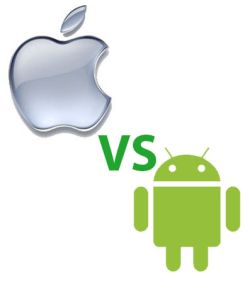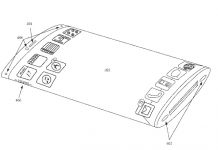 The Atlantic is carrying an excerpt from Fred Vogelstein’s book Dogfight: How Apple and Google Went to War and Started a Revolution. I found it interesting enough that I actually bought the book and have been reading through it, and will probably have more to say on that in a day or so.
The Atlantic is carrying an excerpt from Fred Vogelstein’s book Dogfight: How Apple and Google Went to War and Started a Revolution. I found it interesting enough that I actually bought the book and have been reading through it, and will probably have more to say on that in a day or so.
This except, from Chapter 2, talks about Google’s reaction to Apple’s iPhone launch. Essentially, they were poleaxed by Jobs’s demonstration. (How little they knew—Chapter 1 covered how that first iPhone demonstration was carefully stage-managed to disguise the fact that their demonstrator phone was half-baked with a pronounced tendency to crash at the worst possible time, and it was nothing short of a miracle that the demonstration came off without a hitch.) At that point, Google had been working on a non-touchscreen, thumb-keyboard phone that was essentially an imitation Blackberry, but the iPhone made it look as bad as anything else on the market before it.
“What we had suddenly looked just so . . . nineties,” [Google engineer Chris] DeSalvo said. “It’s just one of those things that are obvious when you see it.”
And so Google scrapped its previous design and went back to the drawing board, coming up with something that could better match up against the iPhone. It would be a long, arduous process, but I’ll talk more about that when I review the book as a whole.
The excerpt goes into further detail about what a terrible experience developing for phones was back then. It’s easy to forget now that almost everyone has either an iPhone or an Android that runs incredibly smoothly, but back in the day, the phone marketplace was fragmented in the worst possible way. Before the Android project, Google had been concentrating on trying to get its search apps onto the phones other companies made, but it was a horrible, frustrating process.
The reason few developers built software for mobile phones was because anytime they tried, they lost money. There was no standardization in the industry. Virtually every phone ran its own software and set of applications, meaning software written for a Samsung phone often wouldn’t run on a Motorola phone, which wouldn’t run on a Nokia. Software platforms were incompatible even within companies. For example, there were a handful of different versions of Symbian. Put simply, the mobile industry screamed “money pit” to any enterprising developer. Most stayed away. The most lucrative business was not writing apps for phones. It was owning a testing company that would make sure your apps worked on all the phones in the market. Larry Page has never been shy talking about how frustrating those days were for him and Google.
“We had a closet full of over 100 phones [that we were developing software for], and we were building our software pretty much one device at a time,” he said in his 2012 report to shareholders. In various remarks over the years he has described the experience as both “awful” and “incredibly painful.”
Back in those pre-Android days, Apple and Google were in a partnership born out of the necessity of keeping Microsoft from taking over yet another platform. Steve Jobs had been a mentor to neophyte CEOs Sergei Brin and Larry Page, and Google was one of Apple’s biggest partners in developing the iPhone. Google search, Google Maps, YouTube—these were part of the software suite that let the iPhone work its magic. But at the same time, Google was working on its own smartphone OS, and before too many years went by the two companies would be at each others’ throats.































That claim is disputed; at least one of the most known Android engineers says otherwise: that the “Sooner” prototype was dropped before the iPhone unveiling. See
http://www.osnews.com/story/27481/Sooner_prototype_dropped_well_before_the_iPhone_announcement_
It is a pity that we may not know where the truth lies, but IMHO this is not so important; cross-pollination in product design and experience is expected (obligatory car analogy: do you really want to force that every brand of car must have different means for steering, i.e some a wheel, some a joystick, some dual levers, etc?)
There seems to be some dispute even over that dispute. She admits to not recalling the date but thinking it was before the iPhone, and we all know how fallible our memories can be—and Vogelstein interviewed multiple engineers for his book; I’d think if there were errors in the dating one of them would have said so. But as you say, not so important in the grand scheme of things.